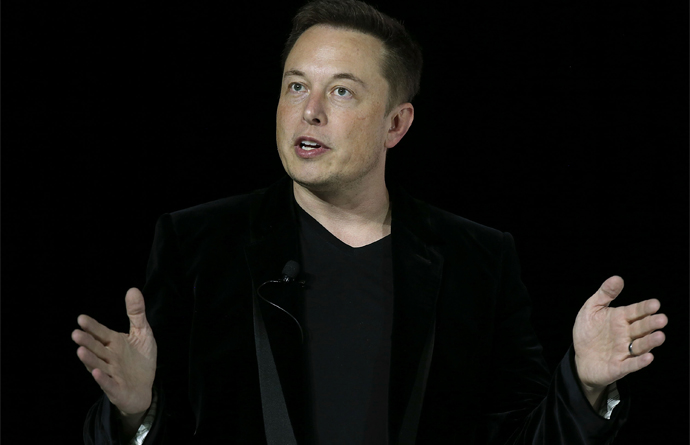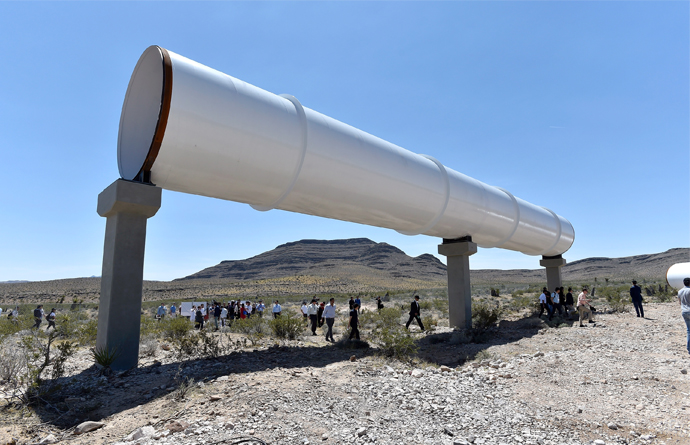Steel is set to form the core of the world’s fastest train, which could reach more than 1000Km/h at a lower cost than traditional high-speed rail
When he’s not designing the car of the future, the solar power system of the future, the electronic payment system of the future or even the space travel system of the future, Elon Musk works on the ‘fifth mode’ of transportation. Like his other innovations, it could revolutionise its sector. And what is a core element of his masterplan? Why, steel.
This ‘fifth mode’ is called Hyperloop and Musk first outlined it in a 58-page technical briefing document back in 2013. “There are no doubt errors of various kinds and superior optimisations for elements of the system,” he said.
‘Trains’ travel at more than 1000Km/h in reduced pressure steel tubes.
That’s why it’s an open source project: Musk came up with the idea, now it’s for others to finish it. Several companies have emerged to try and do this. One of them is the crowdsourced collaboration organisation called Hyperloop Transportation Technologies (HTT).
 Elon Musk has handed over his initial idea as an “open source project”.
Elon Musk has handed over his initial idea as an “open source project”.
Set up in 2014 by JumpStartFund, HTT is a US-based crowdsourcing company from Los Angeles (LA) and comprises around 500 people globally who work a minimum of 10 hours a week in exchange for equity so that they can still retain their day jobs. It claims there are now 45 teams working across 26 countries, with several corporations now contributing to the project too, including LA-based engineering design and construction giant AECOM.
Levitating trains
All the Hyperloop companies differ in the details but the core idea remains the same. ‘Trains’ travel at more than 1000Km/h in reduced pressure steel tubes. The train carriages are pressurised capsule pods, which levitate on an air cushion. Musk envisages an electric air compression on the front of the pod transferring high pressure air from front to rear – essentially an air pump, creating the low-pressure environment. It would be powered by batteries that draw from Tesla technology.
External linear induction motors would both accelerate the capsule and provide reboosts along the track; roughly every 70 miles, says Musk, or around 1% of the tube length, “so it is not particularly costly”.
The train carriages are pressurised capsule pods, which levitate on an air cushion.
HTT’s solution goes further. It uses passive magnetic levitation, which it claims is cheaper and safer than active magnetic levitation, such as Maglev. This forward motion induces magnetic fields in permanent magnets arranged in a Halbach array, which lift the pod from around 20mph. Less thrust energy is thus required to reach high speeds. To slow the pod again? Reverse the thrust force. A lightweight track within the steel tube would thus not require a power source.
It means HTT’s levitation system is cheaper than other solutions. Fewer power stations along the route are required, which will lower construction costs (and make overcoming planning hurdles that bit easier). It’s safer, too. Because levitation occurs through movement, a break in power would see the pods continue to levitate as they decelerated and simply glide to the ground as they neared a halt.
 A tube is displayed at the Hyperloop One Test and Safety site in Nevada, US
A tube is displayed at the Hyperloop One Test and Safety site in Nevada, US
Hyperloop could well be cheaper than high-speed rail projects of a similar distance.
In the tube
The steel tube itself is the most expensive part of the project. The technology within it, although futuristic, is relatively affordable, says Musk. But scaling up a surface-finished steel tube stretching several hundred miles would cost several billions rather than millions. Although even this is cheaper than regular high-speed railway projects of a similar distance, he argues. This is another appeal of Hyperloop.
Wouldn’t travelling in steel tubes, with no windows to look out of, be a bit boring? Yes: enter another collaboration, between HTT and German giant Deutsche Bahn, Europe’s largest rail operator. The two organisations are working on a project called ‘Innovation Train’, creating new technologies including augmented reality windows. The company is serious about creating a wholly futuristic rail experience.
Images: Getty
Video: Hyperloop One